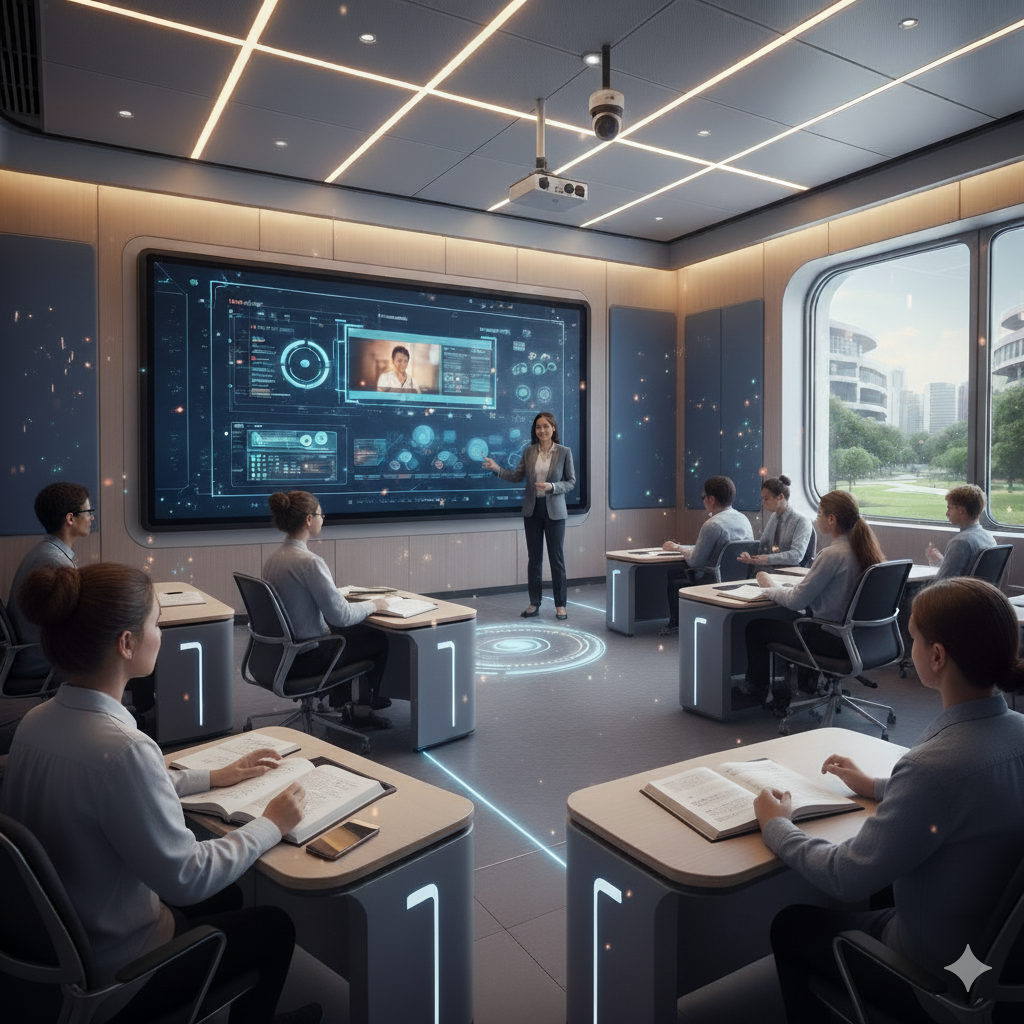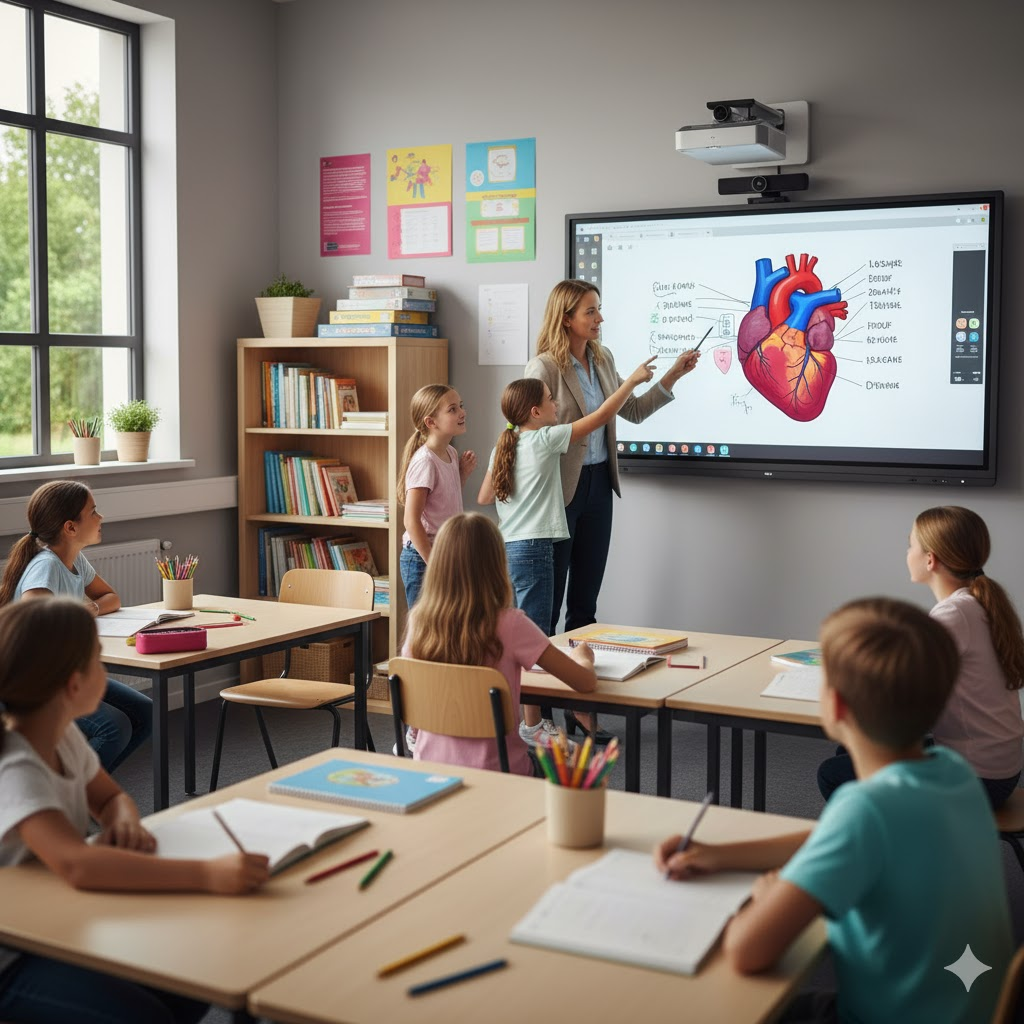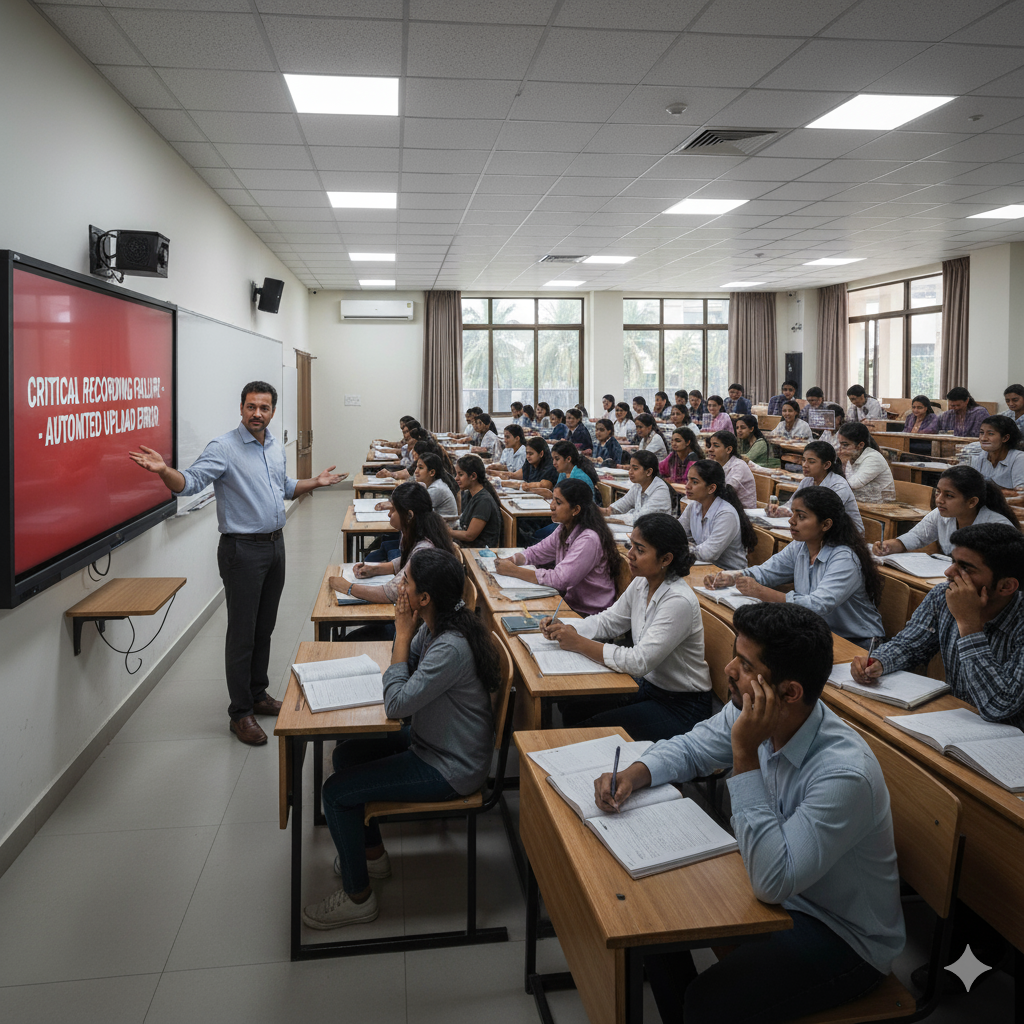High‑Tech Classroom in K‑12 vs Higher Ed: What the Trends Tell Us

What is a High-Tech Classroom Today?
Today’s high-tech classroom is a fully connected, living ecosystem. It’s about every student having a device in their hands, all of it powered by cloud platforms and Wi-Fi that can actually handle the load. It’s about interactive flat-panel displays that act as a central hub, and even immersive tech like AR and VR that can bring a textbook to life.
So why is every school and university is racing to invest?
We all saw what happened in 2020. The pandemic forced a decade's worth of digital adoption into a single semester, and there's no going back. But the truth is, the pandemic just hit fast-forward on trends that were already bubbling. We're teaching a generation of true digital natives, and the one-size-fits-all lecture model is losing ground to a demand for personalized learning that can adapt to each student.
But here's the catch: the way a K-12 school builds a digital classroom is, and should be, completely different from how a university does it. They have different goals, different students, and very different challenges.
#1 Trend Snapshot: The K-12 High-Tech Classroom

When you're dealing with younger learners, from kindergarteners to high school seniors, the game is all about access, engagement, and building a solid foundation. The digital smart classroom here is designed to create a level playing field and make learning a more active, hands-on experience.
Key Technologies and Trends
- One-to-One Device Programs: This is foundational. The goal is to get a device, typically a Chromebook or iPad, into every student's hands to close the digital divide within the school.
- Interactive Whiteboards (IFPs): Those big, brilliant touch-screen displays at the front of the room have become the classroom's command center. Teachers use them for everything from displaying content to facilitating group collaboration.
- Cloud-Based Collaboration: Platforms like Google Classroom and Microsoft Teams are the new backbone. They're how assignments are managed, how kids learn to collaborate on projects, and how teachers keep parents in the loop.
- Gamification and AR/VR: K-12 is embracing simple, engaging apps that use game mechanics and augmented reality to make abstract concepts (like cell biology or ancient history) tangible and, frankly, more fun.
Drivers vs. Constraints
The push for high-tech classroom trends in K12 is really about building digital literacy from day one. But here's the reality check for any school administrator: the vision often runs headlong into some serious practical constraints.
#2 Trend Snapshot: The Higher Education High-Tech Classroom
Things look different when you get to campus. For universities and colleges, the magic words are flexibility, specialization, and job-readiness. The high-tech classroom for higher education model is built for adult learners who need autonomy and are laser-focused on their future careers.
Key Technologies and Trends
- Hybrid/Hyflex Models: This is the big one. Classrooms are being designed from the ground up to support students in the room, students joining live from home, and students watching the lecture on demand later. This requires a sophisticated (and expensive) setup of multiple cameras, ceiling-mounted mics, and rock-solid streaming.
- Immersive Labs & Simulation: This is where the tech gets specialized. Think medical students using VR to perform a virtual surgery, or engineering students testing a bridge design in a physics simulator.
- Learning Analytics: Universities are digging into the massive amount of data from their Learning Management Systems (LMS) to spot at-risk students, improve course design, and boost retention rates.
- Campus-Scale AV/IT: The goal is seamless experience. A professor should be able to walk into any lecture hall or seminar room and have the technology work the same way, every single time.
Drivers vs. Constraints
Higher ed is competitive. Universities use state-of-the-art smart classroom solutions as a major selling point to attract top-tier students and faculty and to forge strong partnerships with industry.
Comparative Insights: K-12 vs. Higher Ed Adoption
So, it's clear everyone is chasing a high-tech classroom, but they're running on different tracks. The high-tech classroom adoption schools vs universities debate isn't about which is "better"—it's about which is appropriate.
Where They Overlap
Both K-12 and Higher Ed are using technology to do a few key things:
- Get Personal: Both aim to use data for personalized learning, moving beyond traditional lecture styles.
- Boost Engagement: Both know that a passive learner is a bored learner. Interactivity is key.
- Make Smarter Decisions: Both are (or should be) using analytics to figure out what's working and what's not.
Where They Diverge
This is where the mission, money, and learner autonomy create a clear split. The digital classroom technologies K-12 vs higher ed strategies are different:
It's also interesting to see how they're learning from each other. K-12's mastery of simple, cloud-based collaboration (like Google Workspace) means universities now expect students to arrive with those skills. Conversely, data analytics strategies from universities are gradually being adopted by K-12 schools.
What These Trends Mean for EdTech Decision-Makers
Okay, so if you're the one responsible for making the decision, what does all this mean for you? These trends aren't just interesting; they have massive, practical implications for what you buy.
Strategic Implications
- Flexibility is Non-Negotiable: The hybrid, "learn-from-anywhere" model isn't a temporary fad. Any smart classroom solutions you invest in must be able to support learners in the room and at home.
- Infrastructure Is Everything: You can buy the fanciest interactive displays in the world, but if your Wi-Fi network drops, they're just expensive wall art. A robust, secure network is the foundation for everything else.
- Training is the Implementation: This is the big one. Do not treat professional development as an optional add-on. The most successful tech adoptions build teacher and faculty training into the plan from day one.
- Think in Systems, Not Gadgets: Don't buy a "box of tech." Plan for scalability. Choose platforms that talk to each other. A solution that works for one "model classroom" might be a nightmare to manage across 500 rooms.
Frequently Asked Questions
1. How can schools and universities measure the success of high-tech classroom investments?
Measuring success goes beyond tech adoption. Institutions should track student engagement, academic outcomes, teacher/faculty satisfaction, retention rates, and the impact on digital literacy or specialized skill development. Clear metrics are essential to ensure the technology genuinely enhances learning and meets strategic goals.
2. What role does teacher training play in maximizing the benefits of a digital classroom?
Teacher and faculty training is paramount. Without robust, ongoing professional development, even the most advanced smart classroom solutions can fall flat. Effective training ensures educators are confident, proficient, and creative in leveraging technology to enhance pedagogy, rather than seeing it as a mere supplement or burden.
3. Are "high-tech classrooms" only for urban or well-funded institutions?
Not necessarily. While budgets are a factor, accessible digital classroom solutions are expanding. Cloud-based tools and open-source resources can enable significant digital integration even with limited resources. The focus should be on strategic adoption that aligns with educational goals, rather than just acquiring the latest gadgets.
4. Why is personalized learning a key driver for investment in smart classroom solutions?
Personalized learning, which tailors education to individual student needs and paces, is a major force behind smart classroom solutions. High-tech tools, particularly those leveraging data analytics and AI such as Roombr Digital Classroom hardware, allow educators to track student progress, identify areas where students might struggle or excel, and then adapt content and teaching methods accordingly. This shift moves beyond traditional, one-size-fits-all instruction, aiming for more effective and engaging outcomes for every learner.
Ready to transform your learning environment? Explore Roombr's cutting-edge smart classroom solutions and discover how our technology can empower your students and educators for the future.
Foziya Abuwala
Share
Step Into the future of
Education with Roombr

















